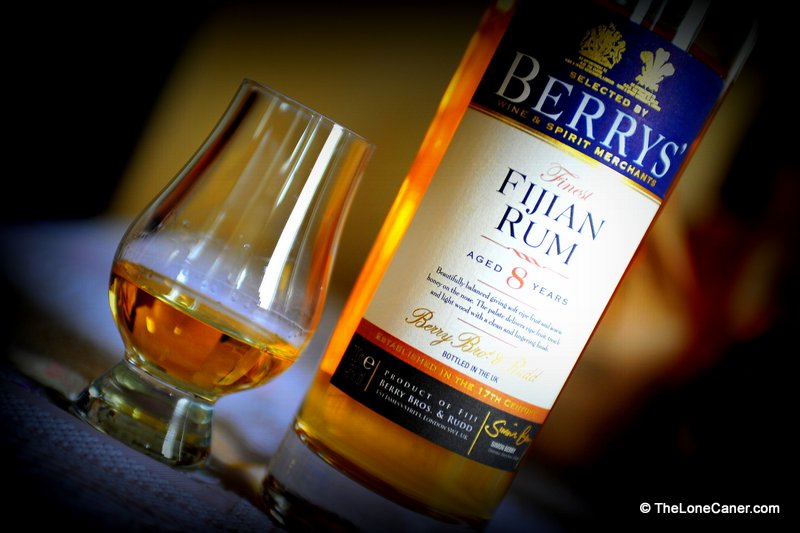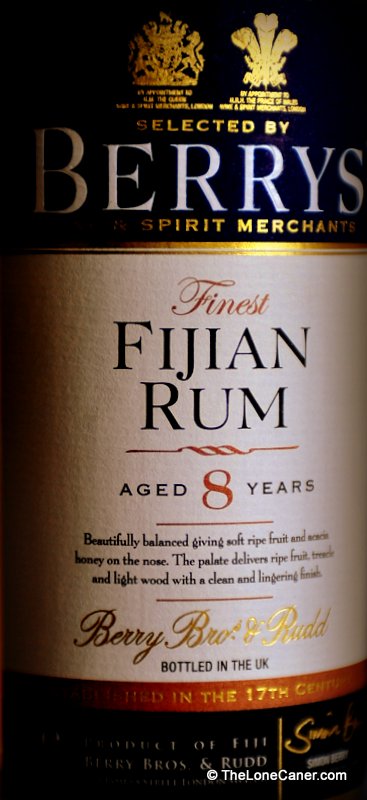Compagnie des Indes, run by the flamboyant and cheerful Florent Beuchet, was one of the first independent bottlers whose rums I found and started reviewing, along with Rum Nation and the original Renegade and yes, Velier. The small company is still going strong, and after having made its bones with some really good single cask bottlings — I have fond memories of their Indonesian rum, for example — did some very unusual one-offs (Florida, Thailand, Ghana, El Salvador), and also expanded into blends, much as 1423 has done, with names as evocative as Tricorn, Blacklice, Boulet de Canon, Veneragua, Barbagaya, Caraibes, Dominidad, Kaiman and (on my list to try for sure) the Great Whites. Yet, as with most independents, while it is the softer blends that provide the cash flow, it’s the cask bottlings that are deemed the cream of the crop, and form the edifice upon which the Compagnie’s reputation is considered to rest.
The rum for today is one of these: a molasses-based rum from Fiji, distilled in 2010 on a column still, aged seven years there and three years in Europe, resulting in an outturn of 407 bottles, and whose provenance is not disclosed.
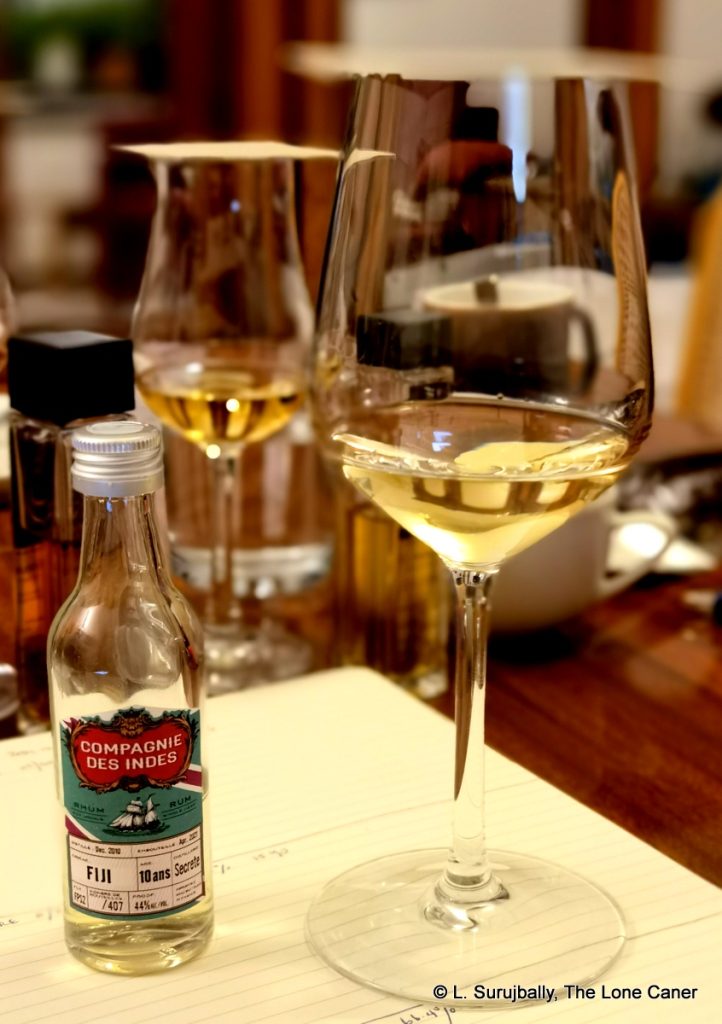 The precedent for such demure modesty in the naming is admittedly not new. Sometimes pre-existing sales arrangements with other brands — even the distillery’s own — come with the condition that third party bottlings don’t get to capitalise on the distillery’s name; sometimes it’s because the provenance is not entirely nailed down; sometimes it’s reverse marketing. Whatever the reason, upon further consideration, the amused cynic in me posits that perhaps there’s a good reason for a rum coming from the only rum-making enterprise on Fiji to proclaim it comes from a “Secret Distillery”: the fact that the rum, alas, isn’t that interesting.
The precedent for such demure modesty in the naming is admittedly not new. Sometimes pre-existing sales arrangements with other brands — even the distillery’s own — come with the condition that third party bottlings don’t get to capitalise on the distillery’s name; sometimes it’s because the provenance is not entirely nailed down; sometimes it’s reverse marketing. Whatever the reason, upon further consideration, the amused cynic in me posits that perhaps there’s a good reason for a rum coming from the only rum-making enterprise on Fiji to proclaim it comes from a “Secret Distillery”: the fact that the rum, alas, isn’t that interesting.
There is, you see, not a whole lot going on with the nose as it stands. Granted 44% isn’t the strongest rum I’ve ever tried, and indeed it was the puniest of the rums in that evening’s first flight. Yet even taking that into account the rum is something of a lightweight: some light apples, cider and yoghurt, followed by wispy, watery fruits (pears, watermelon, papaya), some grapes, and licorice. There’s a line of sugar cane sap and lemon meringue pie here and there, just difficult to come to grips with and it wafts away too quickly. There should be more to a sipping rum from one barrel than a nose this ephemeral, I’m thinking.
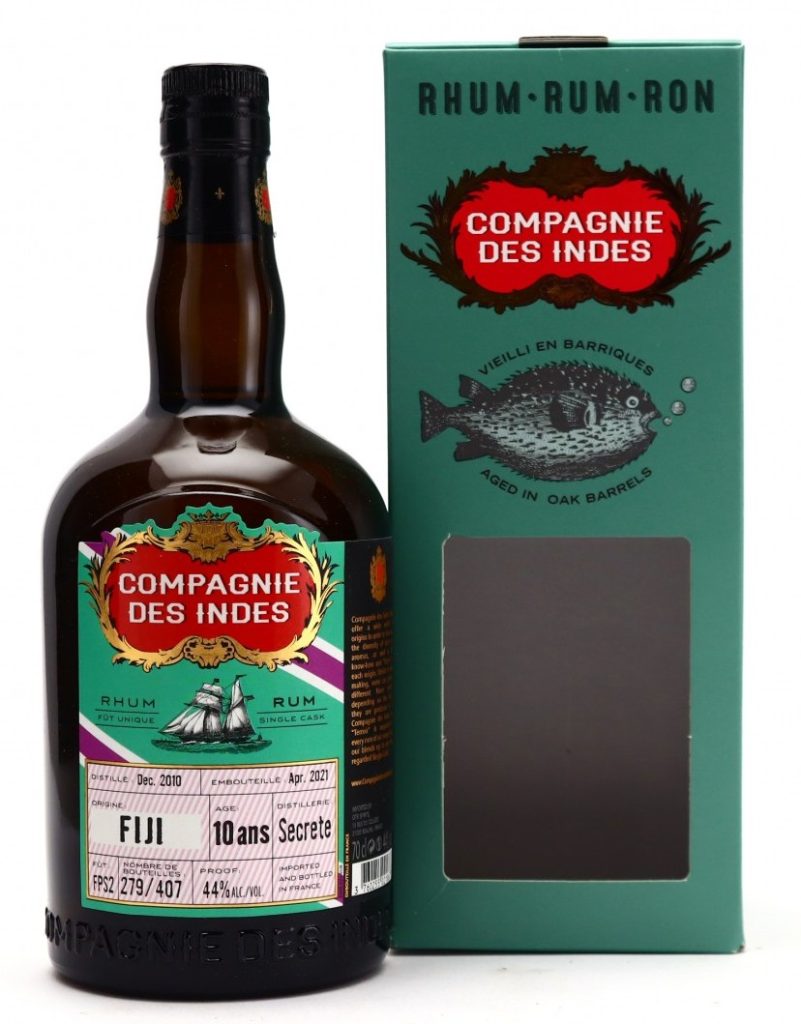 Tasting it reinforces this impression of “move along folks, nothing to see here.” The rum has a firm feel on the tongue, yet you’d be hard pressed to discourse on any single component of what comprises it. Some light, white fruits – guavas, pears, melon – tasting the slightest bit salty at times, overlaid with a whiff of acetone. If you pushed you might hazard a guess that you sense papaya or kiwi fruit, sugar water and maybe a slight briny aspect, akin to salt caramel chocolate. And the finish is just that, a finish, and a quick one at that. White guavas, a hint of brine, flowers and acetone, all weak and airy and very hard to detect.
Tasting it reinforces this impression of “move along folks, nothing to see here.” The rum has a firm feel on the tongue, yet you’d be hard pressed to discourse on any single component of what comprises it. Some light, white fruits – guavas, pears, melon – tasting the slightest bit salty at times, overlaid with a whiff of acetone. If you pushed you might hazard a guess that you sense papaya or kiwi fruit, sugar water and maybe a slight briny aspect, akin to salt caramel chocolate. And the finish is just that, a finish, and a quick one at that. White guavas, a hint of brine, flowers and acetone, all weak and airy and very hard to detect.
Several years ago I tried an earlier one of the Compagnie’s Fiji rums – that one was from 2004, also from South Pacific, also ten years old, also 44%. At the time it was too new for me to make any sweeping statements about it, though I remarked that it wasn’t quite my cup of tea (for reasons other than those noted here). In the interim there have been quite a few more candidates from the distillery, including those released by Bounty, Samaroli, L’Esprit, TCRL, the Rum Cask, Duncan Taylor, and even the Compagnie a few more times. None have had this almost indifferent aroma and vague palate, at any strength.
So we know from years of subsequent experience that both the Compagnie and South Pacific can do a whole lot better, and there is rum out there from the distillery which is just shy of magnificent. Since I know that, I can only assume that the barrel this was aged in was simply exhausted and had nothing left to give except maybe good advice. My own recommendation, then, is simply that it’s a pass. Fortunately, given the sheer volume and variety of excellent rum that Florent has put out over the last decade, there is no shortage of good and better rums from the Compagnie that can take its place.
(#983)(79/100) ⭐⭐⭐
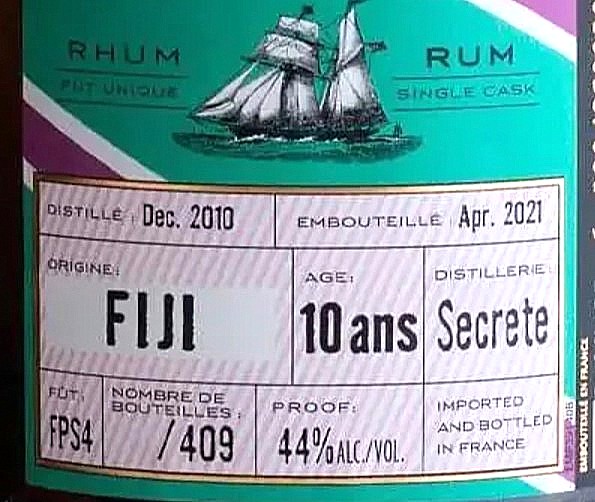
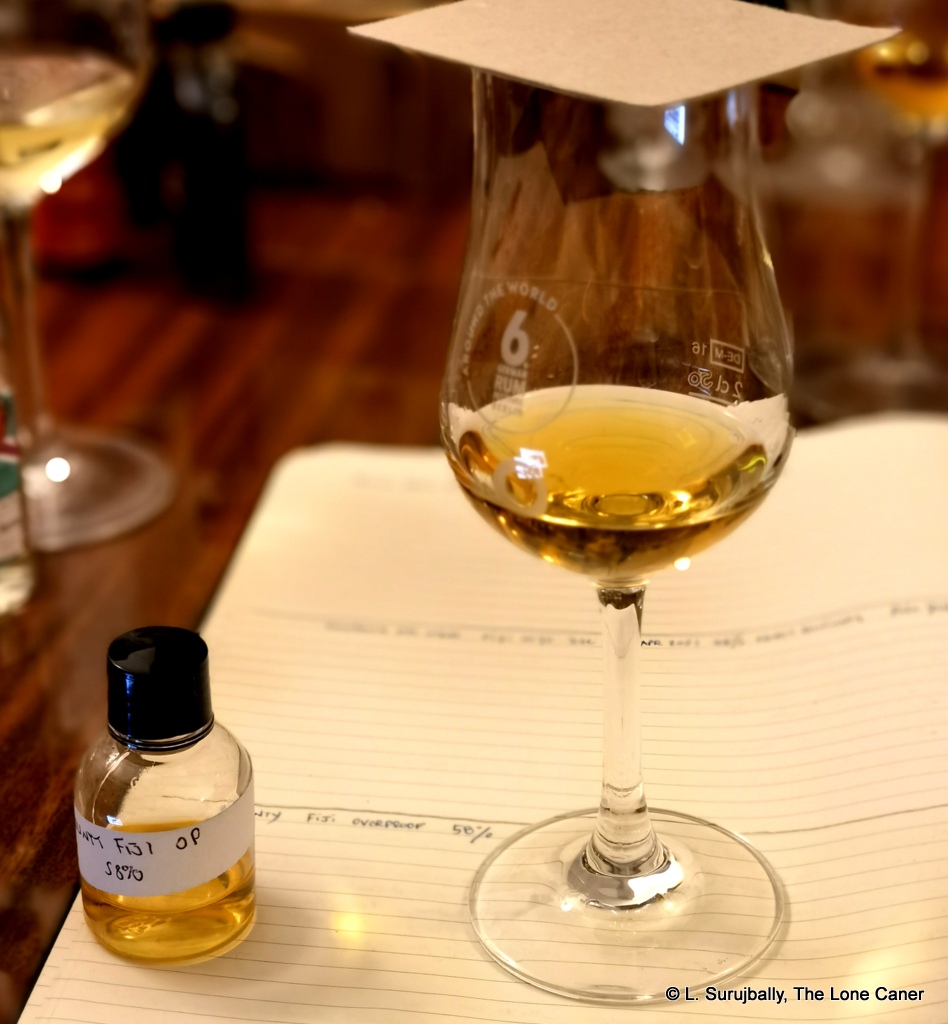
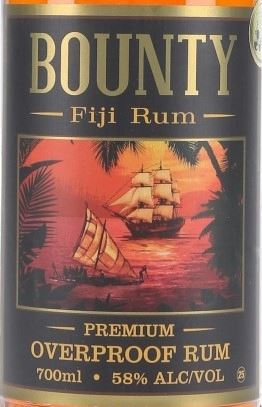
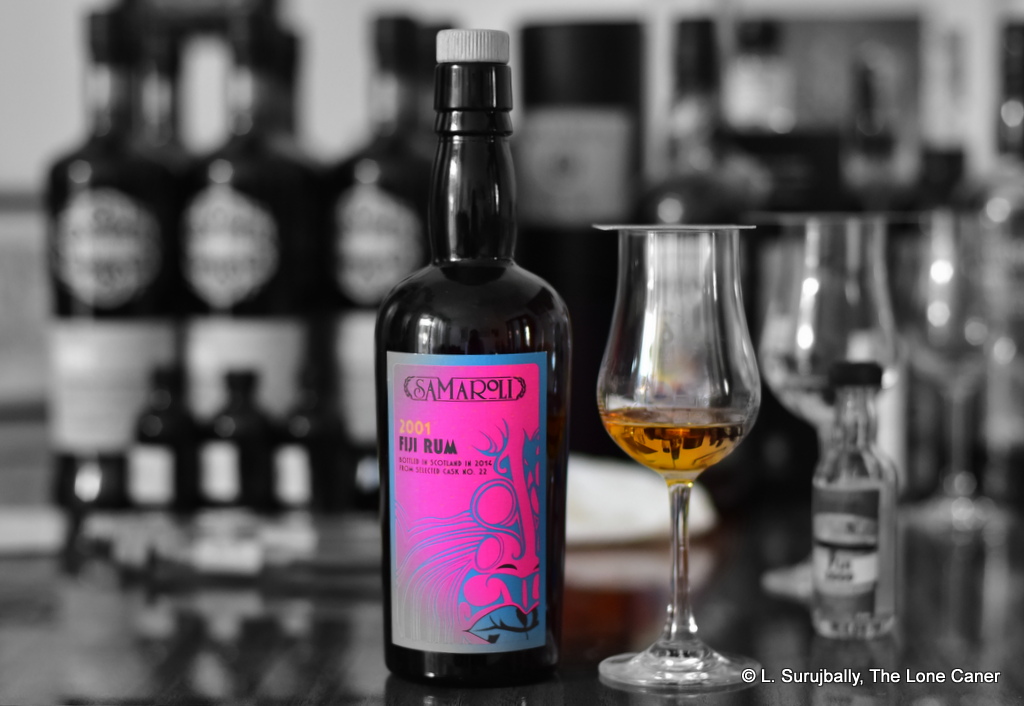
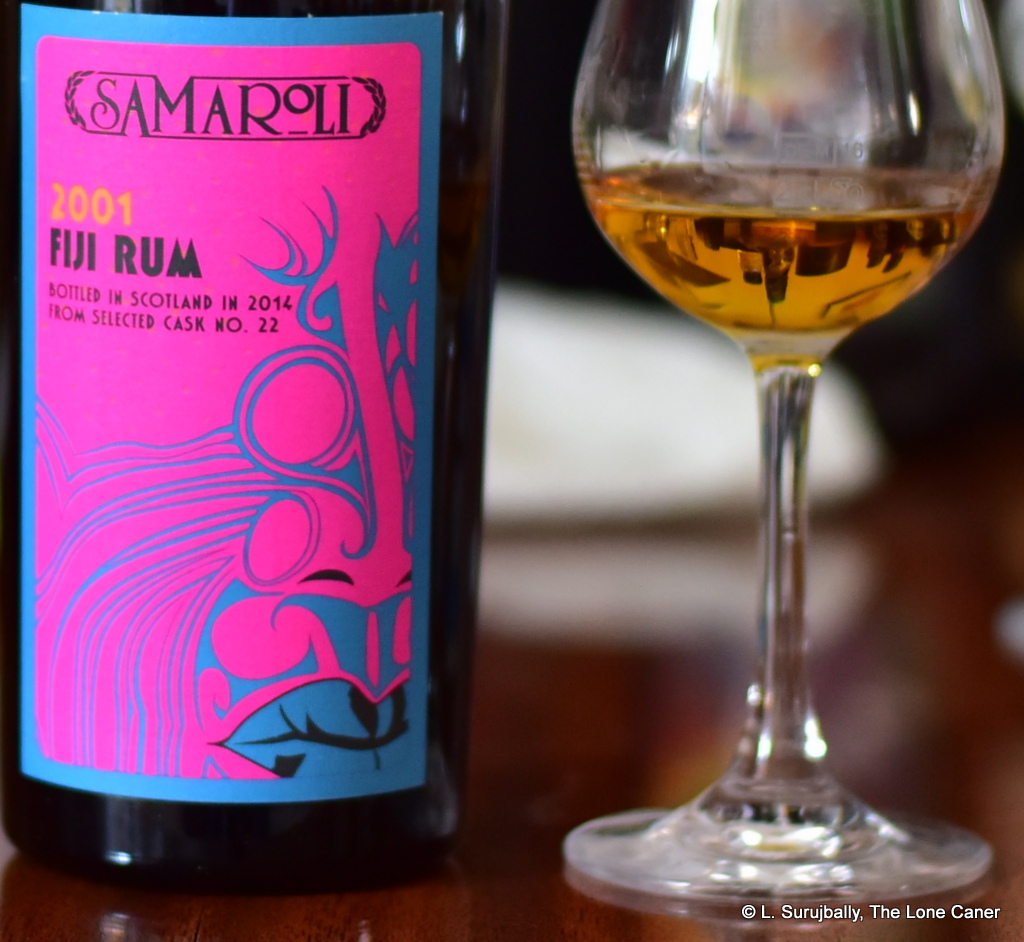
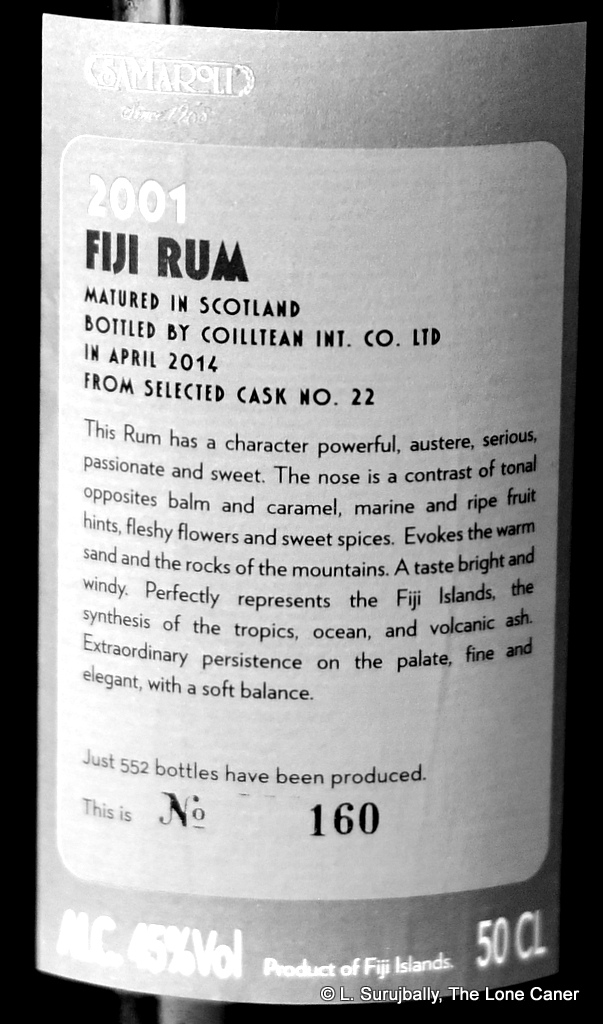
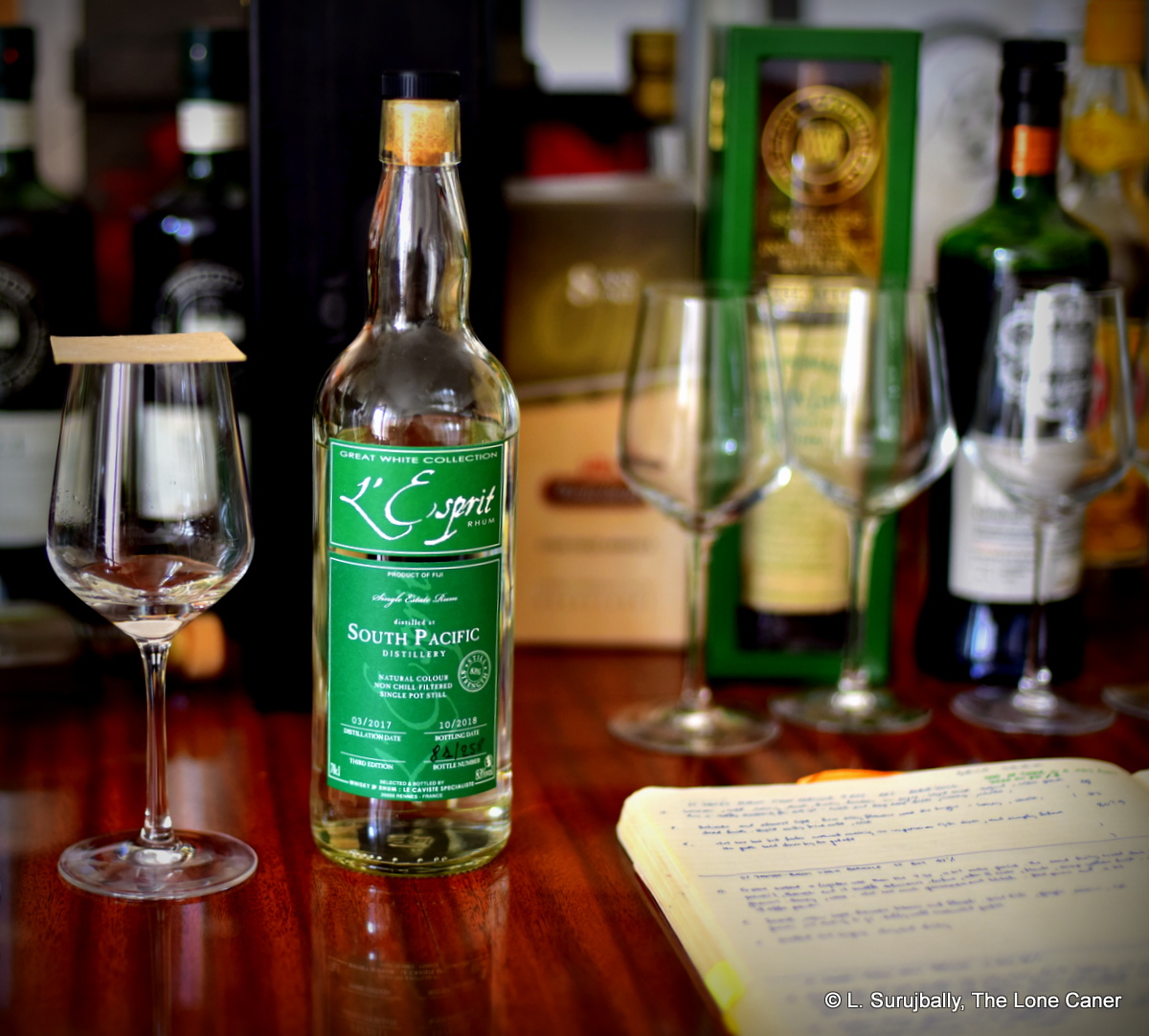
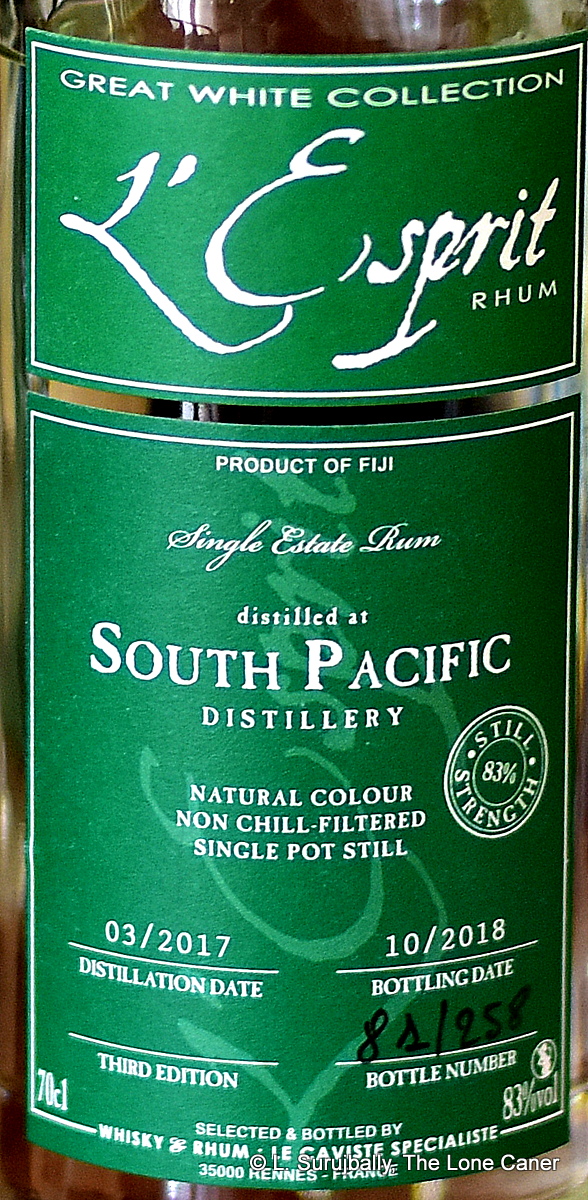 Whatever the case, the rum was as fierce as the Diamond, and even at a microscopically lower proof, it took no prisoners. It exploded right out of the glass with sharp, hot, violent aromas of tequila, rubber, salt, herbs and really good olive oil. If you blinked you could see it boiling. It swayed between sweet and salt, between soya, sugar water, squash, watermelon, papaya and the tartness of hard yellow mangoes, and to be honest, it felt like I was sniffing a bottle shaped mass of whup-ass (the sort of thing Guyanese call “regular”).
Whatever the case, the rum was as fierce as the Diamond, and even at a microscopically lower proof, it took no prisoners. It exploded right out of the glass with sharp, hot, violent aromas of tequila, rubber, salt, herbs and really good olive oil. If you blinked you could see it boiling. It swayed between sweet and salt, between soya, sugar water, squash, watermelon, papaya and the tartness of hard yellow mangoes, and to be honest, it felt like I was sniffing a bottle shaped mass of whup-ass (the sort of thing Guyanese call “regular”).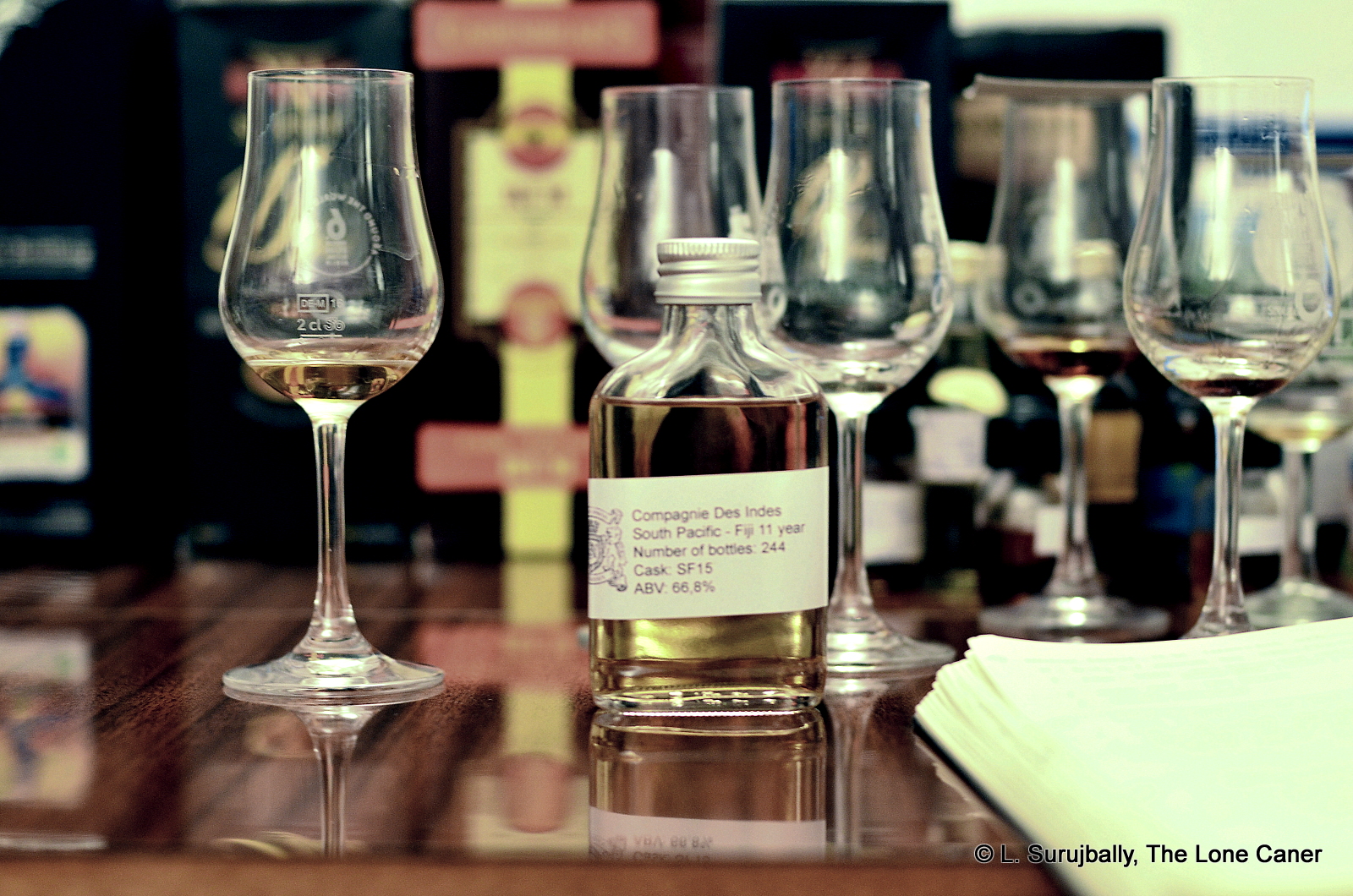
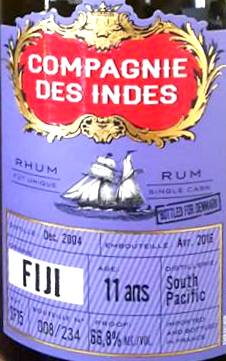 It was obvious after one tiny sniff, that not one percentage point of all that proofage was wasted and it was all hanging out there: approaching with caution was therefore recommended. I felt like I was inhaling a genetically enhanced rum worked over by a team of uber-geek scientists working in a buried government lab somewhere, who had evidently seen King Kong one too many times. I mean, okay, it wasn’t on par with the
It was obvious after one tiny sniff, that not one percentage point of all that proofage was wasted and it was all hanging out there: approaching with caution was therefore recommended. I felt like I was inhaling a genetically enhanced rum worked over by a team of uber-geek scientists working in a buried government lab somewhere, who had evidently seen King Kong one too many times. I mean, okay, it wasn’t on par with the 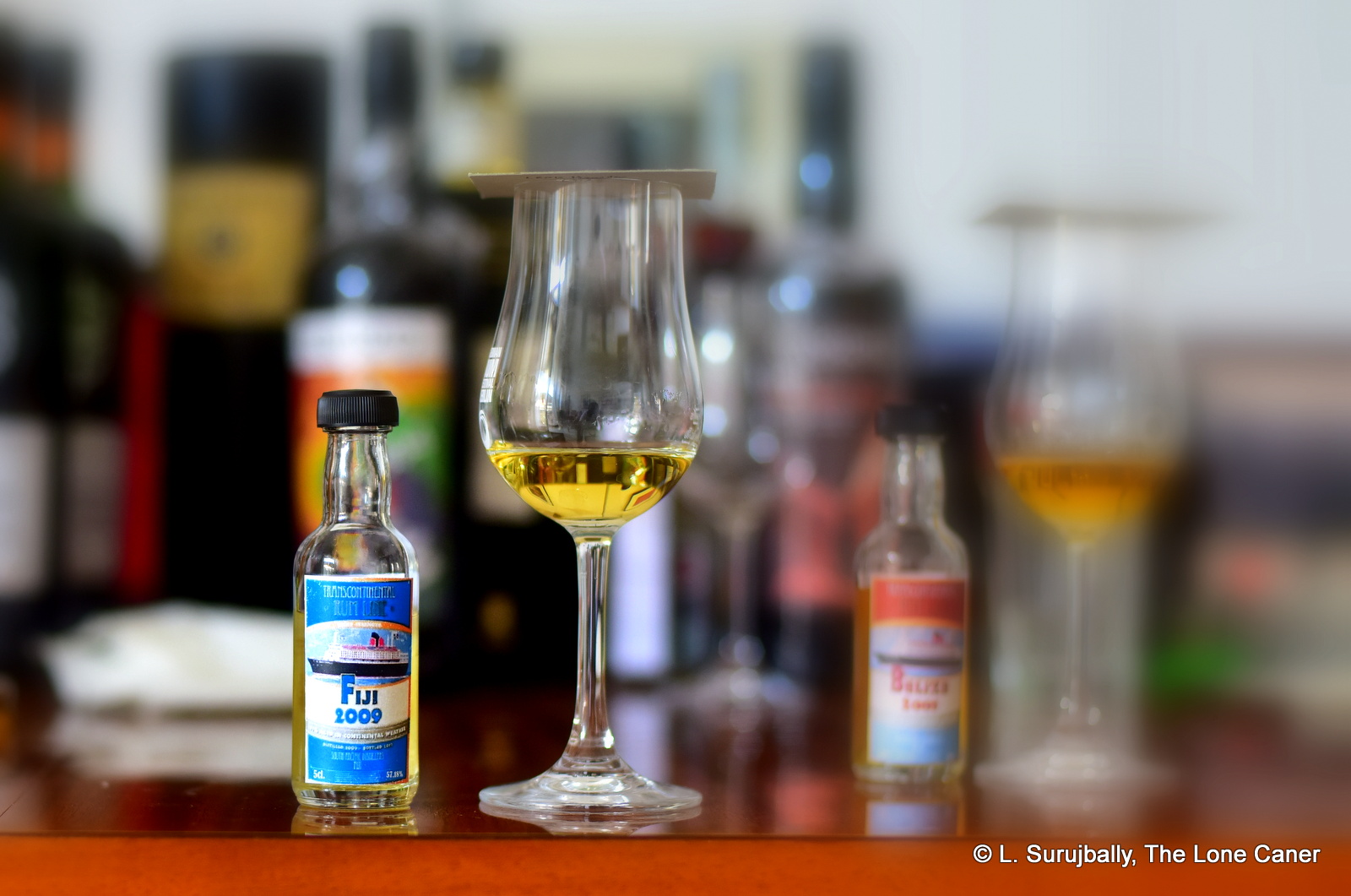
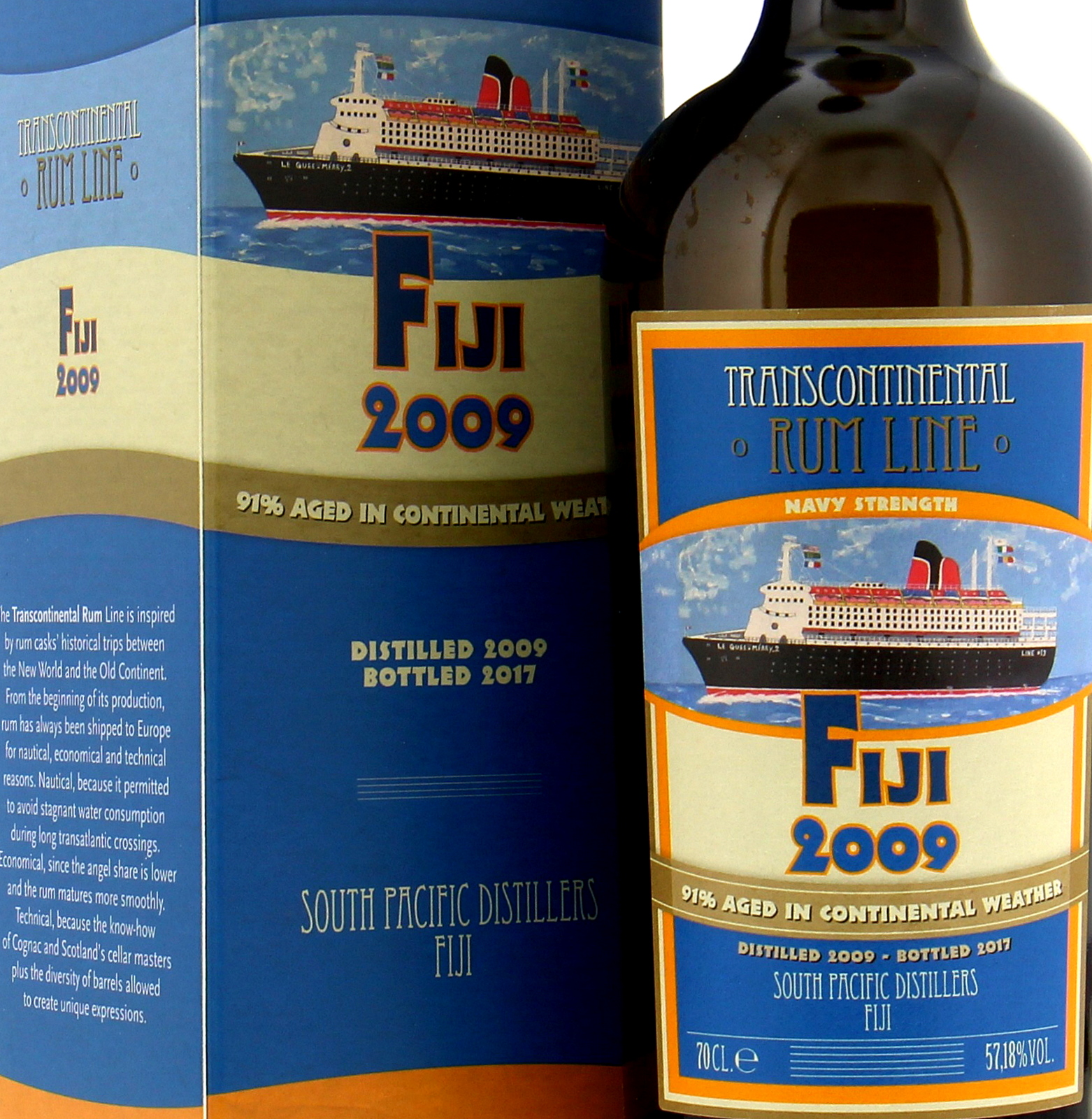 That said, the still which produced this pale yellow 57.19% ABV rum remains an open question, though my personal belief is that it’s a column still product. It certainly noses that way – aside from presenting as a fierce little young rum, it lacks something of the depth and pungency of a pot still spirit. However, that doesn’t matter, because it’s damn fine on its own merits – brine, olives, paint, turpentine, acetones, fresh nail polish, more brine and gherkins, and that’s just the beginning. It has aspects that are almost Jamaican, what with a bunch of prancing dancing esters jostling for attention, except that the smell is not so crisply sweet. It develops very nicely into smoke, leather, linseed oil for cricket bats, more brine and oily smoothness. Like a set of seething rapids finished with the messing around, it settles down to a much more refined state after half an hour or so.
That said, the still which produced this pale yellow 57.19% ABV rum remains an open question, though my personal belief is that it’s a column still product. It certainly noses that way – aside from presenting as a fierce little young rum, it lacks something of the depth and pungency of a pot still spirit. However, that doesn’t matter, because it’s damn fine on its own merits – brine, olives, paint, turpentine, acetones, fresh nail polish, more brine and gherkins, and that’s just the beginning. It has aspects that are almost Jamaican, what with a bunch of prancing dancing esters jostling for attention, except that the smell is not so crisply sweet. It develops very nicely into smoke, leather, linseed oil for cricket bats, more brine and oily smoothness. Like a set of seething rapids finished with the messing around, it settles down to a much more refined state after half an hour or so.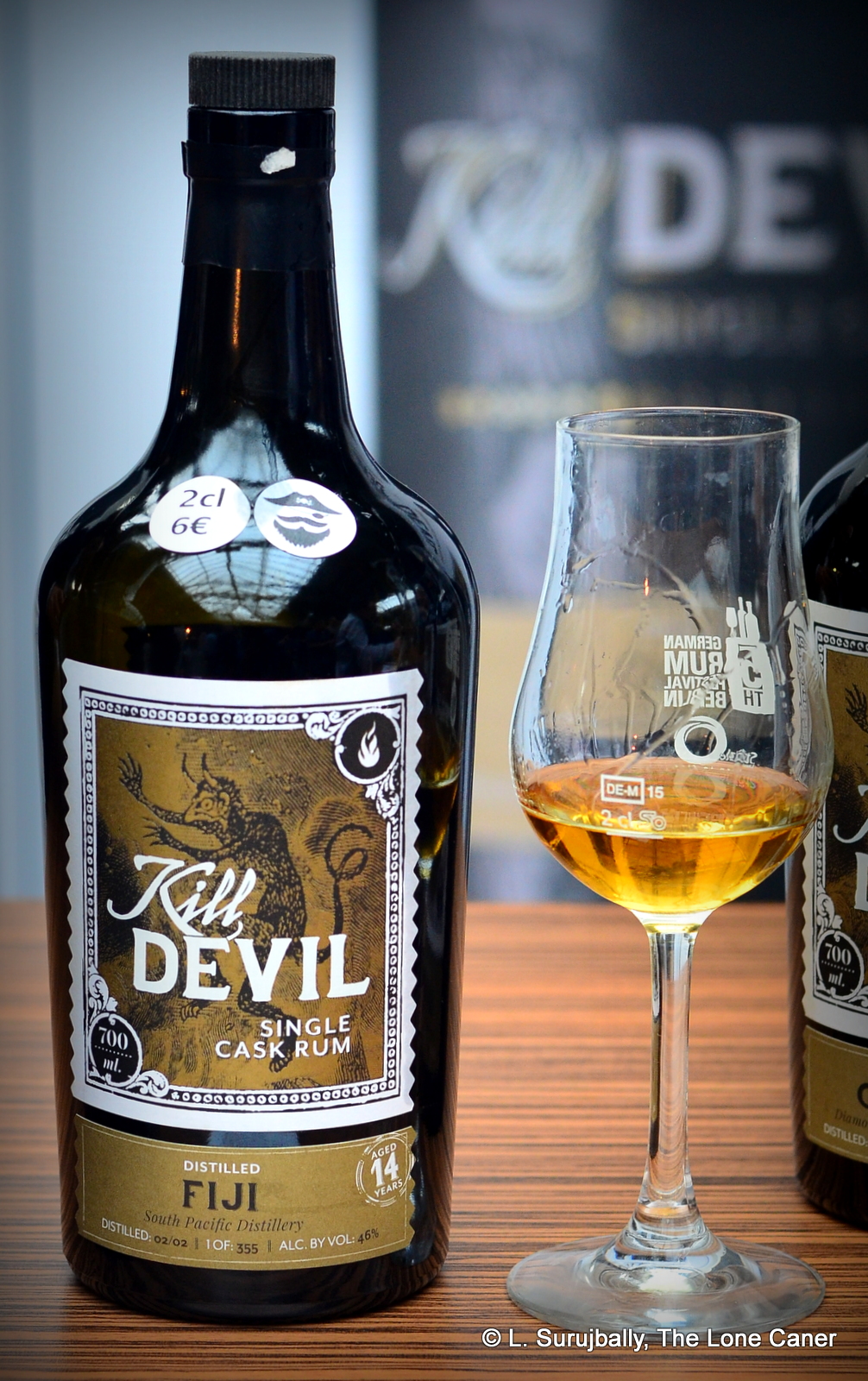 Kill Devil is the rum brand of the whiskey blender Hunter Laing, who’ve been around since 1949 when Frederick Laing founded a whisky blending company in Glasgow. In 2013 the company created an umbrella organization called Hunter Laing & Co, into which they folded all their various companies (like Edition Spirits and the Premier Bonding bottling company). The first rums they released to the market – with all the now-standard provisos like being unadulterated, unfiltered and 46% – arrived for consumers in 2016, which meant that this rum from the South Pacific Distillery on Fiji, was issued as part of their first batch (oddly, their own website provides no listing of their rums at all aside from boilerplate blurbs). When the time came for me to decide what to sample, the
Kill Devil is the rum brand of the whiskey blender Hunter Laing, who’ve been around since 1949 when Frederick Laing founded a whisky blending company in Glasgow. In 2013 the company created an umbrella organization called Hunter Laing & Co, into which they folded all their various companies (like Edition Spirits and the Premier Bonding bottling company). The first rums they released to the market – with all the now-standard provisos like being unadulterated, unfiltered and 46% – arrived for consumers in 2016, which meant that this rum from the South Pacific Distillery on Fiji, was issued as part of their first batch (oddly, their own website provides no listing of their rums at all aside from boilerplate blurbs). When the time came for me to decide what to sample, the 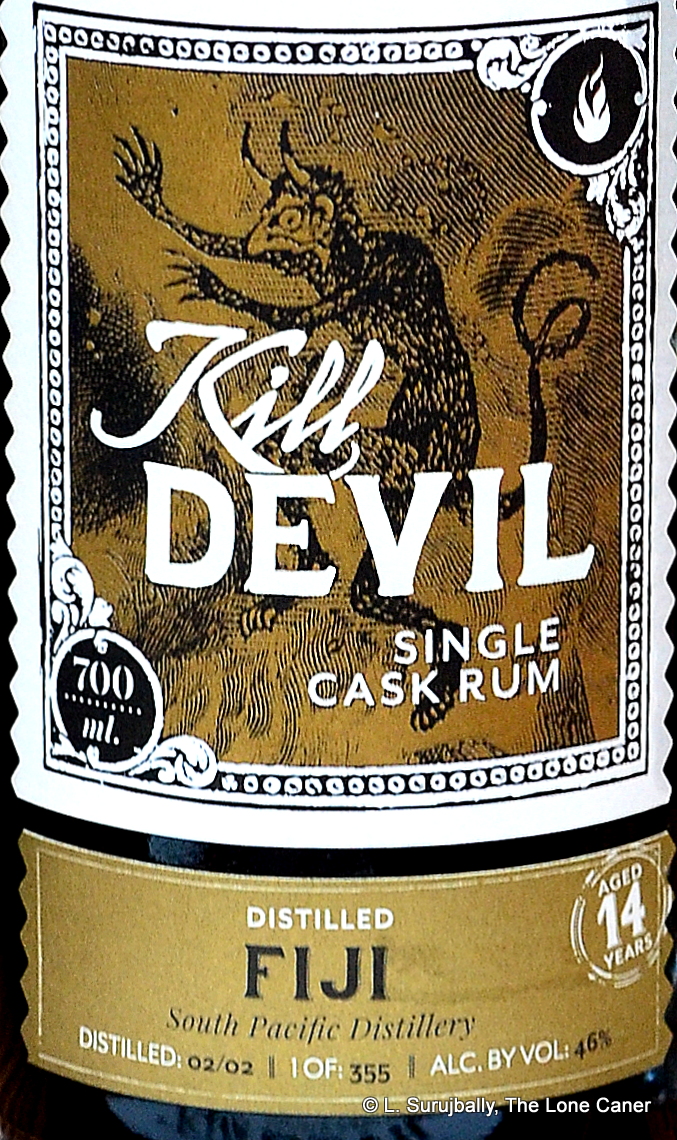 On the palate the fruits started to take over, tart and a unripe, like ginnips and soursop together with ripe mangoes, pineapple and cherries in syrup right out of a can – there was hardly any of the brininess from the nose carrying over, and as it developed, additional hints of pears, watermelon, honey, and pickled gherkins were clearly noticeable. It was warm and crisp at the same time, quite nice, and while the long and heated finish added nothing new to the whole experience, it didn’t lose any of the flavours either; and I was left thinking that while different from other Fijians for sure, it seemed to be channelling a sly note of Jamaican funk throughout, and that was far from unpleasant….though perhaps a bit at odds with the whole profile.
On the palate the fruits started to take over, tart and a unripe, like ginnips and soursop together with ripe mangoes, pineapple and cherries in syrup right out of a can – there was hardly any of the brininess from the nose carrying over, and as it developed, additional hints of pears, watermelon, honey, and pickled gherkins were clearly noticeable. It was warm and crisp at the same time, quite nice, and while the long and heated finish added nothing new to the whole experience, it didn’t lose any of the flavours either; and I was left thinking that while different from other Fijians for sure, it seemed to be channelling a sly note of Jamaican funk throughout, and that was far from unpleasant….though perhaps a bit at odds with the whole profile.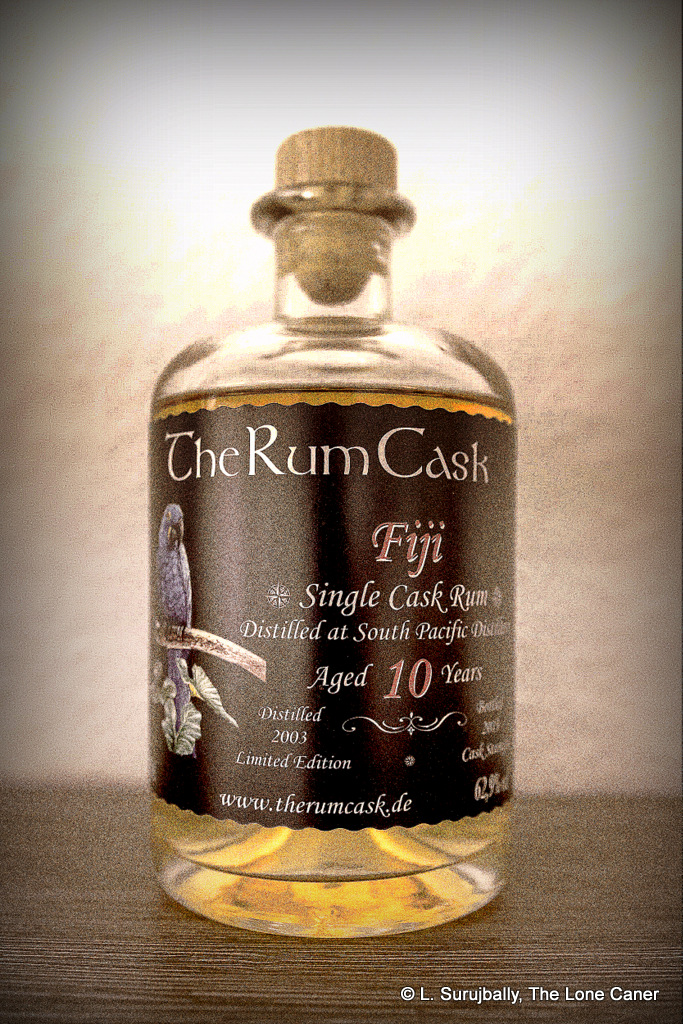
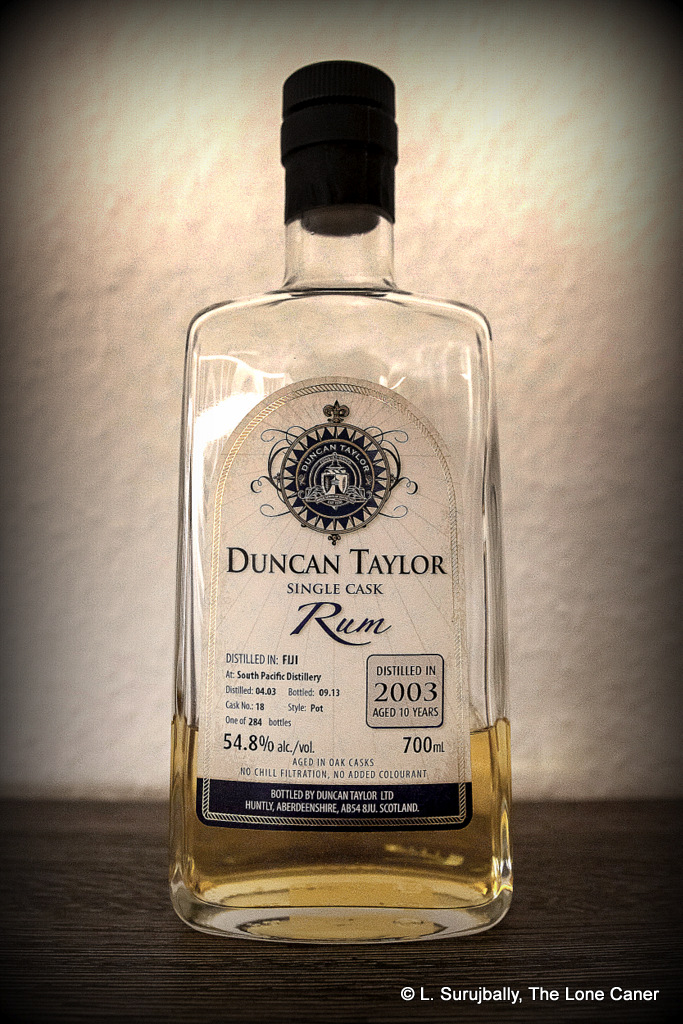
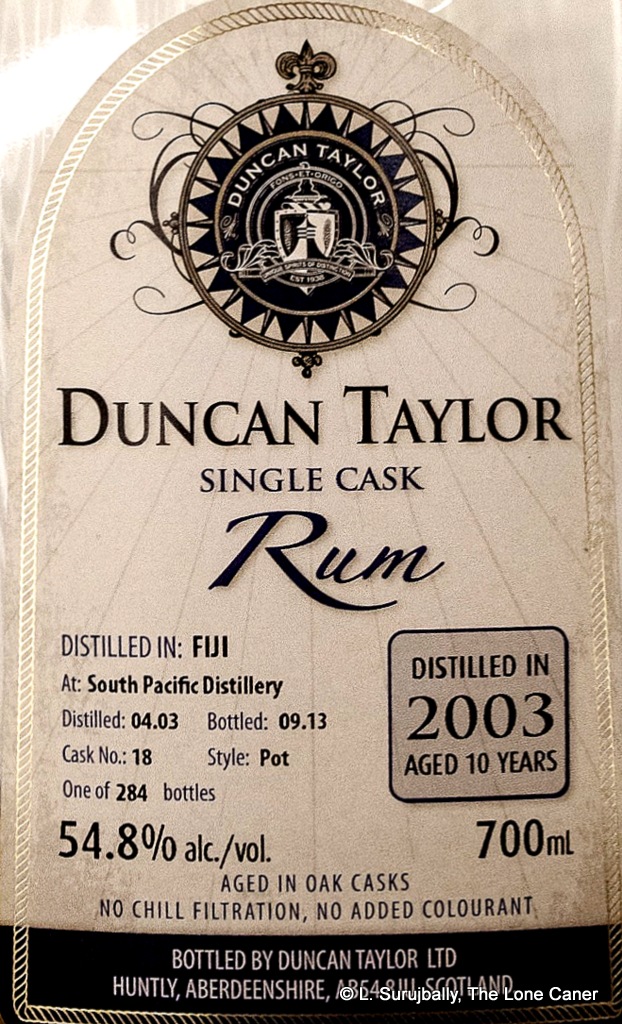
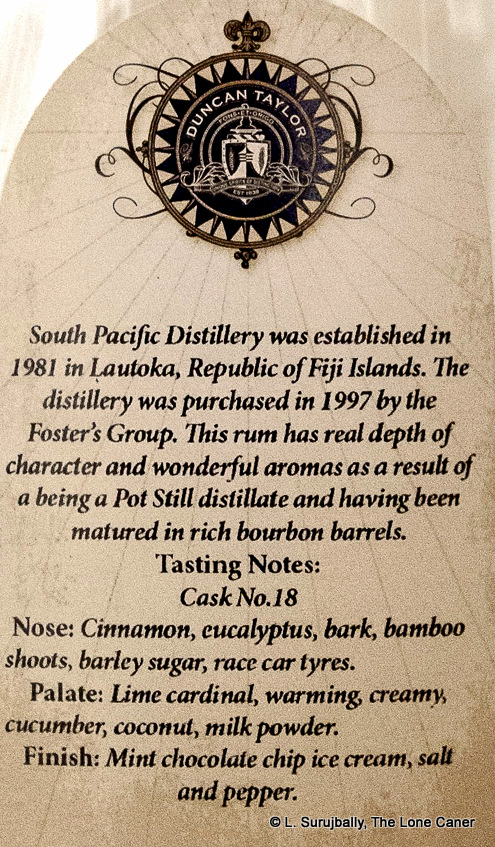
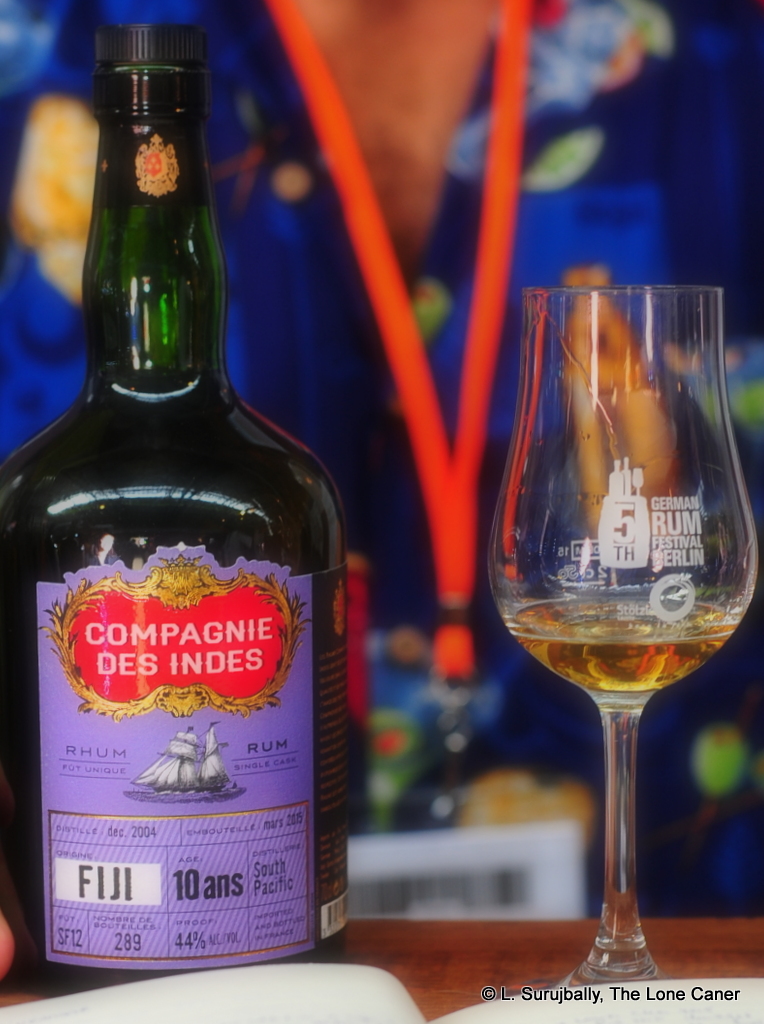
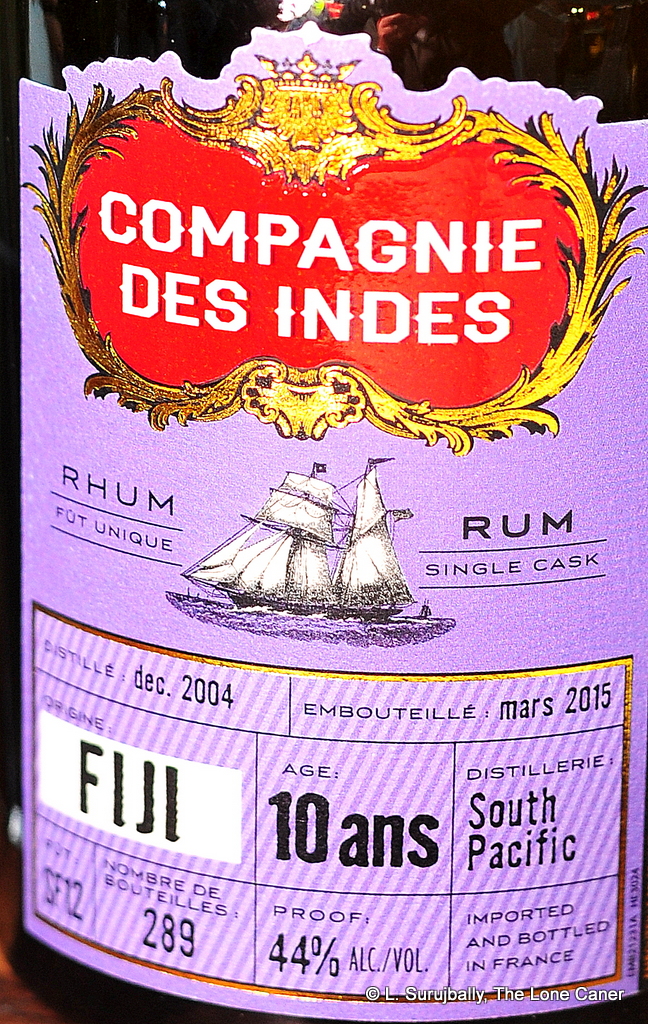 palled my enjoyment somewhat.
palled my enjoyment somewhat.